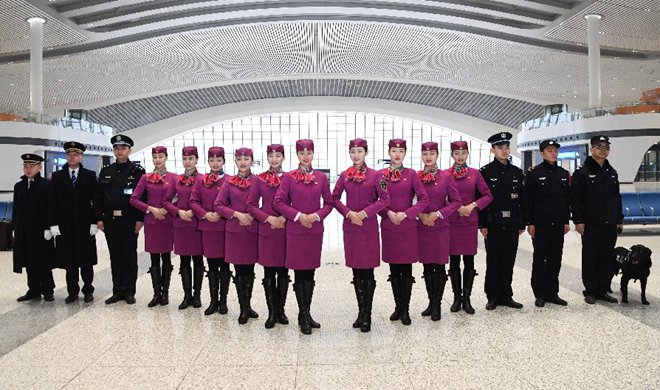BERLIN, Jan. 16 (Xinhua) -- Germany has witnessed a further decline in the number of new asylum seekers recorded in 2017, figures published on Tuesday by Interior Minister Thomas de Maiziere and the Federal Office for Migration and Refugees (Bamf) show.
According to Bamf, 187,000 individuals applied for asylum during the past 12 months. This figure marked a significant reduction compared to 280,000 asylum seekers in 2016 and 890,000 asylum seekers at the height of the refugee crisis in 2015. Meanwhile, the number of deportations fell to 26,000 in 2017 from 28,000 in 2016.
De Maiziere praised Bamf for its work, telling press that the situation was "under control". The minister highlighted a substantial decline in the number of outstanding cases, as well as a reduction in the duration of application processes.
As already held true in 2016, the largest number of asylum seekers who arrived in Germany last year came from Syria (47,434). Syrian nationals were then followed by Iraqis (21,043), Afghanis (12,346) and Eritreans (9,524). Around 8,000 Turkish nationals also applied for asylum in Germany in 2017.
Despite the fall in asylum seekers identified by the Interior Ministry and Bamf, the Federal Statistical Office also released data on Tuesday which showed that Germany's population had grown to its largest-ever size since the beginning of measurements in 1989.
As a consequence of high immigration since 2015, the number of inhabitants rose to a total of 82.8 million by the end of 2017. The German population thus grew by around 300,000 individuals last year, after witnessing increases of 346,000 individuals in 2016 and 978,000 individuals in 2015.
The Wiesbaden-based government statisticians noted that this development was largely due to the fact that more people emigrated to Germany than left the country during the period under observation.
Given the country's demographic structure, the Federal Statistical Office, however, expects population growth to slow again in the coming years.

















